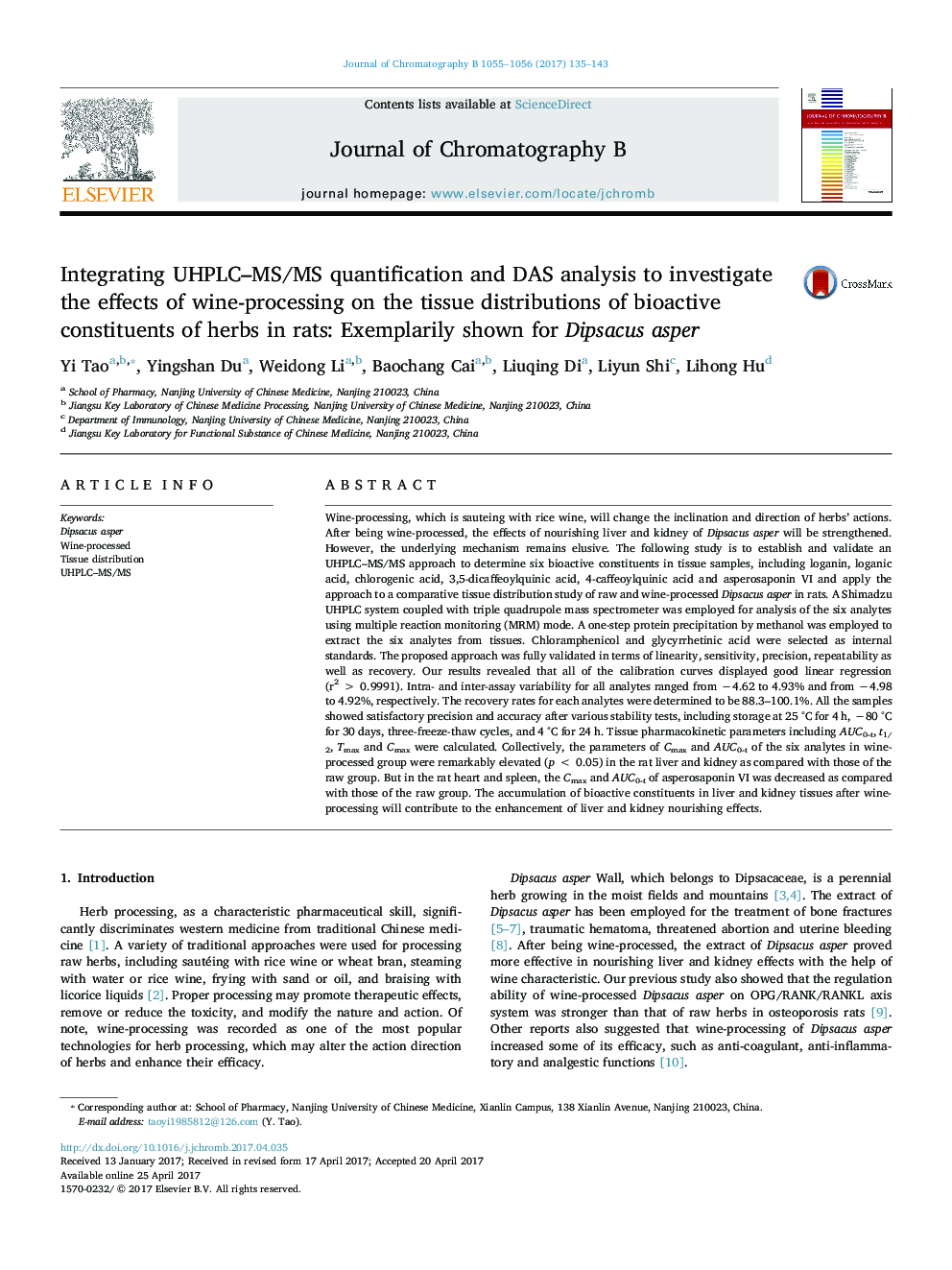| Article ID | Journal | Published Year | Pages | File Type |
|---|---|---|---|---|
| 5136335 | Journal of Chromatography B | 2017 | 9 Pages |
Abstract
Wine-processing, which is sauteing with rice wine, will change the inclination and direction of herbs' actions. After being wine-processed, the effects of nourishing liver and kidney of Dipsacus asper will be strengthened. However, the underlying mechanism remains elusive. The following study is to establish and validate an UHPLC-MS/MS approach to determine six bioactive constituents in tissue samples, including loganin, loganic acid, chlorogenic acid, 3,5-dicaffeoylquinic acid, 4-caffeoylquinic acid and asperosaponin VI and apply the approach to a comparative tissue distribution study of raw and wine-processed Dipsacus asper in rats. A Shimadzu UHPLC system coupled with triple quadrupole mass spectrometer was employed for analysis of the six analytes using multiple reaction monitoring (MRM) mode. A one-step protein precipitation by methanol was employed to extract the six analytes from tissues. Chloramphenicol and glycyrrhetinic acid were selected as internal standards. The proposed approach was fully validated in terms of linearity, sensitivity, precision, repeatability as well as recovery. Our results revealed that all of the calibration curves displayed good linear regression (r2 > 0.9991). Intra- and inter-assay variability for all analytes ranged from â4.62 to 4.93% and from â4.98 to 4.92%, respectively. The recovery rates for each analytes were determined to be 88.3-100.1%. All the samples showed satisfactory precision and accuracy after various stability tests, including storage at 25 °C for 4 h, â80 °C for 30 days, three-freeze-thaw cycles, and 4 °C for 24 h. Tissue pharmacokinetic parameters including AUC0-t, t1/2, Tmax and Cmax were calculated. Collectively, the parameters of Cmax and AUC0-t of the six analytes in wine-processed group were remarkably elevated (p < 0.05) in the rat liver and kidney as compared with those of the raw group. But in the rat heart and spleen, the Cmax and AUC0-t of asperosaponin VI was decreased as compared with those of the raw group. The accumulation of bioactive constituents in liver and kidney tissues after wine-processing will contribute to the enhancement of liver and kidney nourishing effects.
Related Topics
Physical Sciences and Engineering
Chemistry
Analytical Chemistry
Authors
Yi Tao, Yingshan Du, Weidong Li, Baochang Cai, Liuqing Di, Liyun Shi, Lihong Hu,
